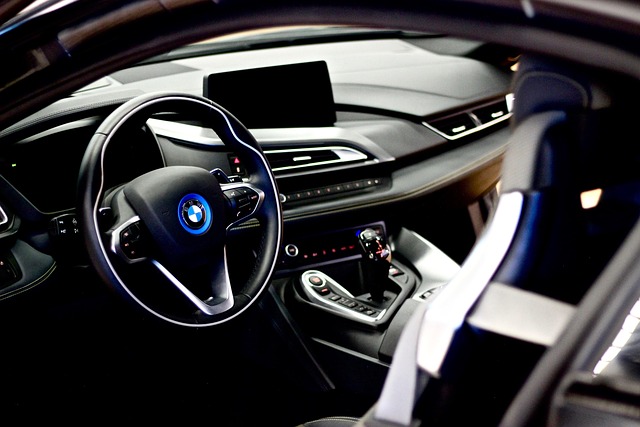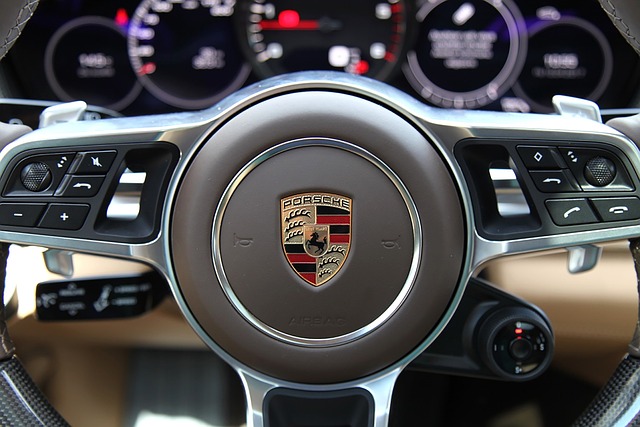When choosing an in-car infotainment system, prioritize vehicle compatibility and personal needs. Key features include Bluetooth, USB, music streaming apps, voice controls, and advanced driver assistance. Budget options offer quality without breaking the bank. Before installation, gather tools and a compatible unit tailored to your vehicle. Prepare your dashboard by unplugging old cables, cleaning, and noting connections. Install the new system securely, integrating it with car features like voice command. Test and calibrate for optimal sound quality across all speakers.
Looking to upgrade your car’s audio experience? Installing a new car stereo is an accessible DIY project. Start by selecting an In-Car Infotainment System that suits your vehicle and preferences, ensuring compatibility for a seamless fit. Gather essential tools and materials, then carefully remove the old stereo and prepare your dash area. Connect wires according to the manufacturer’s instructions, test your new setup, and calibrate for optimal sound. Enjoy enhanced driving with your newly installed car stereo!
- Choose the Right In-Car Infotainment System for Your Vehicle
- Gather Necessary Tools and Materials Before Installation
- Remove Existing Stereo and Prepare Dash Area for New Setup
- Connect Wires and Install New Stereo According to Manufacturer Instructions
- Test and Calibrate Your Newly Installed Car Stereo
Choose the Right In-Car Infotainment System for Your Vehicle

When selecting an In-Car Infotainment system, it’s crucial to choose one that fits your vehicle and needs. Different cars have varying dashboard spaces and connectivity requirements. Opting for a system that seamlessly integrates with your car’s existing hardware can enhance your driving experience. Consider features like Bluetooth connectivity, USB ports, and compatible music streaming apps for a modern audio setup.
Additionally, look out for advanced driver assistance features such as voice-activated car audio controls. These not only make operating your stereo easier but also contribute to safer driving practices. Moreover, if budget is a concern, there are many affordable luxury infotainment options available that offer high-quality sound and robust features without breaking the bank.
Gather Necessary Tools and Materials Before Installation

Before tackling any DIY car installation project, it’s crucial to gather all the necessary tools and materials. For installing a new car stereo, you’ll need basic automotive tools like screwdrivers (both flathead and Phillips), wire strippers, and possibly a soldering iron if your setup involves connecting wires directly. Additionally, ensure you have the correct select in-car infotainment unit compatible with your vehicle’s make and model, along with any necessary adapters or wiring harnesses.
Don’t forget to invest in some protective gear like gloves and safety glasses for safety during installation. For a modern touch, consider incorporating music visualization displays or the latest in-cabin technology into your setup if your budget allows. Even a voice-activated car audio system can enhance your driving experience by allowing hands-free control over music and calls—a feature that’s become increasingly popular in today’s connected cars.
Remove Existing Stereo and Prepare Dash Area for New Setup

Removing your old car stereo and preparing your dashboard for a new setup is a crucial step in installing a modern in-car infotainment system. Begin by unplugging any cables connected to the existing stereo, taking note of their placement. Many newer cars come equipped with advanced in-cabin technology, so understanding how these components integrate into your vehicle’s architecture is essential. Carefully pry out the old stereo, cleaning the dashboard area thoroughly to ensure a smooth transition for your latest in-car infotainment.
Once the space is ready, consider the new possibilities of hands-free driving navigation and in-car internet access that modern systems offer. This involves assessing the physical dimensions and connectivity options of your chosen stereo, ensuring it seamlessly integrates into your vehicle’s existing dashboard design. A well-prepared dashboard area makes installing a new car stereo an easier process, allowing you to focus on enjoying your upgraded in-cabin experience.
Connect Wires and Install New Stereo According to Manufacturer Instructions

Once you’ve removed the old stereo, it’s time to install your new in-car infotainment system. Start by carefully routing and securing the power cable, ensuring a clean and safe installation. Connect the positive (+) and negative (-) terminals according to your vehicle’s manual to avoid any short circuits. Many modern stereos offer handsfree calling and messaging capabilities, enhancing your driving experience with crystal clear audio and secure communication.
Next, integrate the stereo with your car’s existing features. Some models may include a voice command for climate control, allowing you to adjust the temperature without taking your eyes off the road. Verify that all connections are secure and double-check the settings on the digital cockpit display for optimal functionality. Remember to refer to the manufacturer’s instructions throughout the process for a seamless installation.
Test and Calibrate Your Newly Installed Car Stereo

After successfully installing your new car stereo, it’s crucial to test and calibrate it thoroughly for optimal performance. Start by connecting your device and ensuring all features are functioning as expected, including volume control, audio playback, and any additional functions like smart car connectivity solutions or wireless charging pads.
Next, focus on sound quality and calibration. Adjust the stereo’s settings to match your preferences and the vehicle’s acoustics. The latest in-cabin technology often includes advanced audio processing that can enhance the overall listening experience. Calibration ensures that the stereo delivers clear and balanced sound across all speakers, creating an immersive auditory environment while you’re on the road.
Installing a car stereo can enhance your driving experience by providing better entertainment and navigation. By carefully selecting an In-Car Infotainment System, gathering the right tools, preparing your vehicle’s dash area, following manufacturer instructions for connection and installation, and finally testing and calibrating your new setup, you can enjoy a seamless transition to a more modern and enjoyable in-car audio experience.
